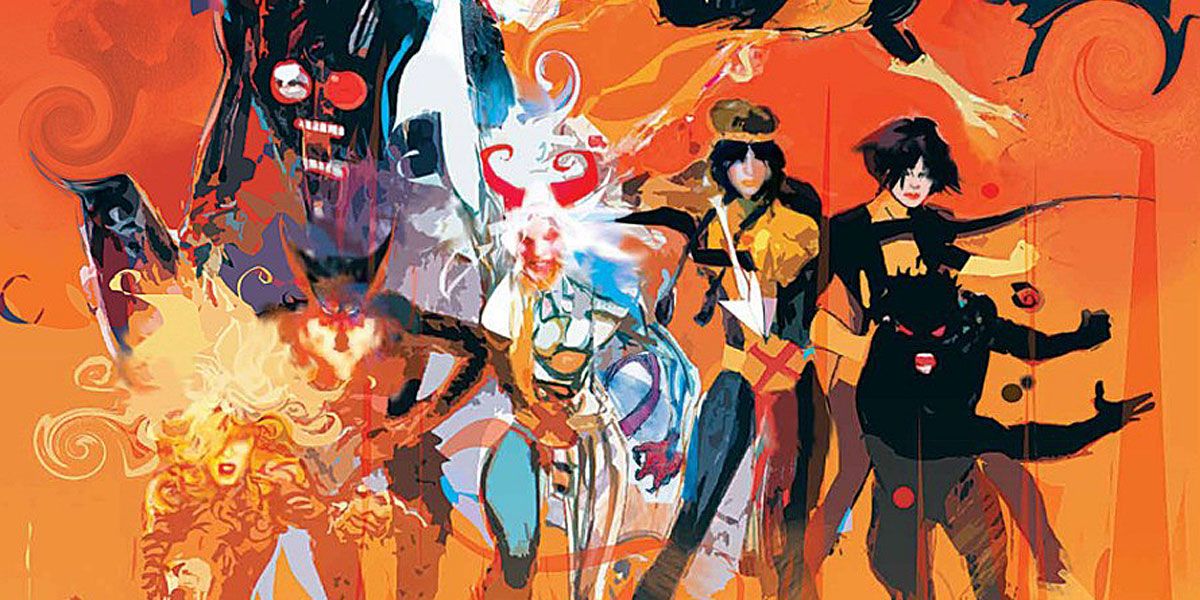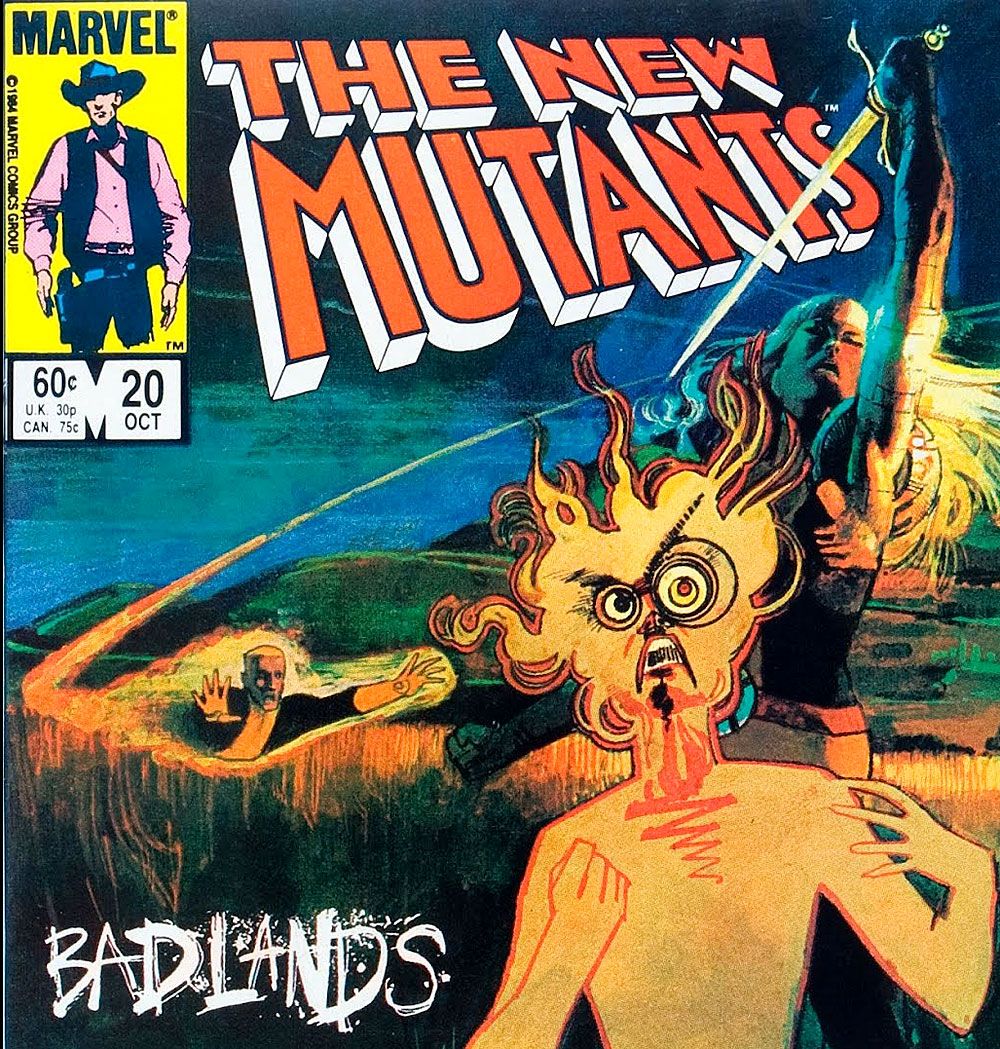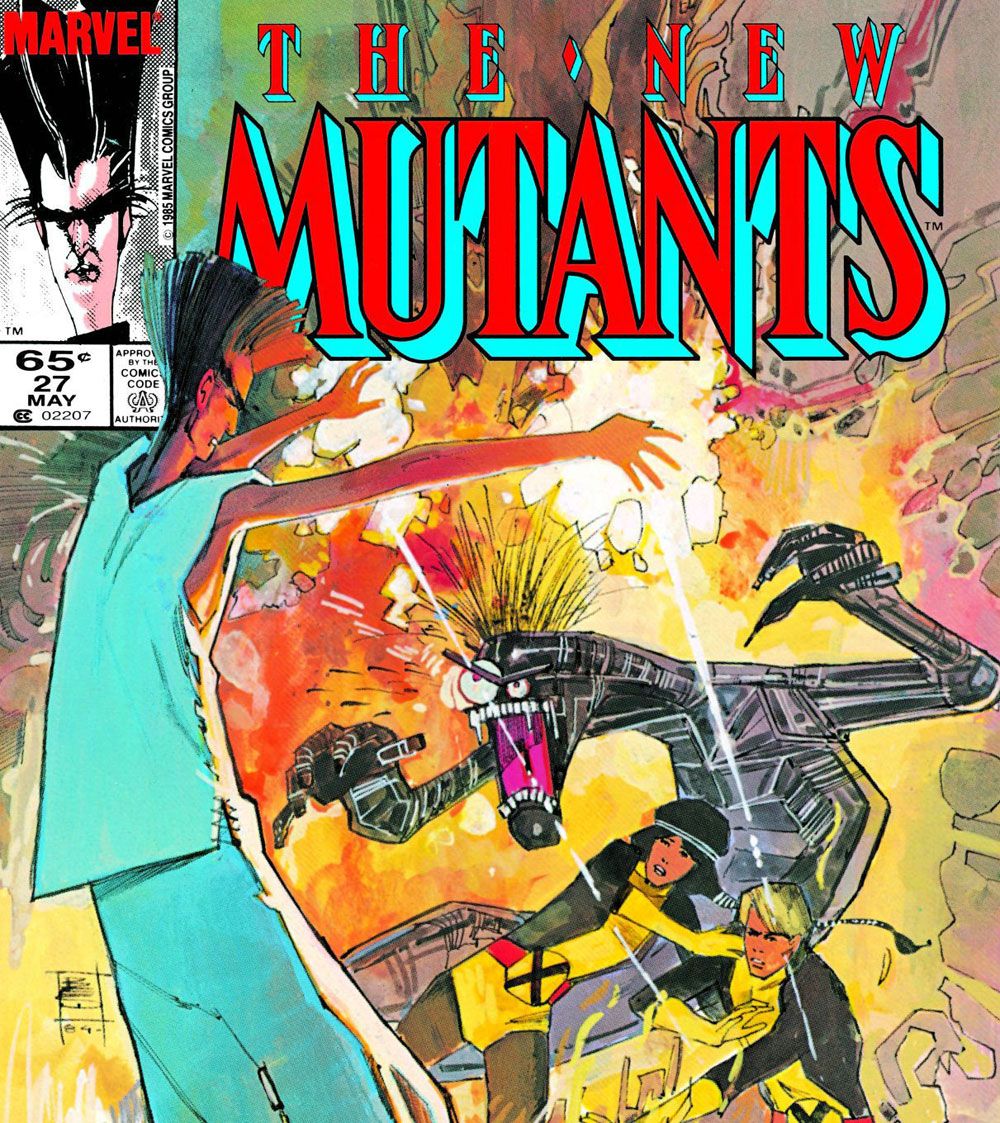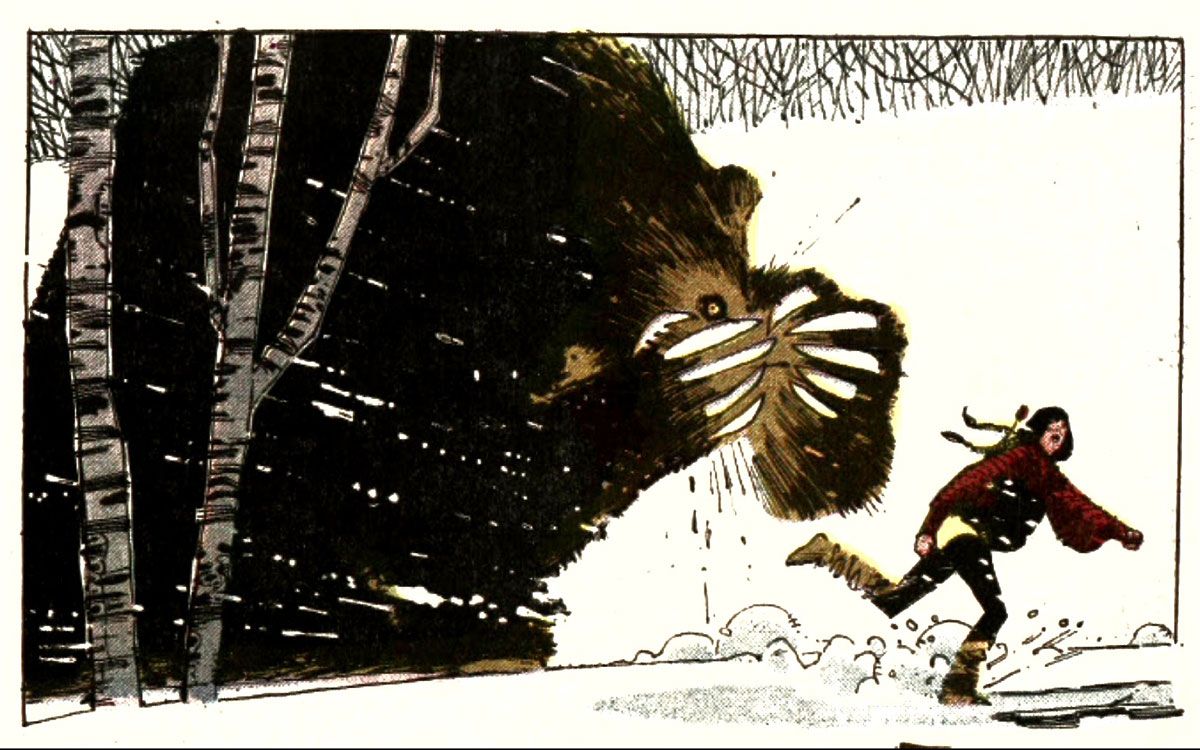With a New Mutants film in development at Fox, artist Bill Sienkiewicz sat down with podcast host John Siuntres to discuss his influential run on the influential Marvel Comics series, and the breadth of his lengthy tenure in the industry.
With the film slated for an April 2018 release, Sienkiewicz noted, "Arya Stark just left and is on the set in Boston," speaking of actress Maisie Williams.
Turning to his own origins, Sienkiewicz said he grew up "bailing hay in horse country." Speaking of people in this community, he said, "If they knew Neal Adams, they probably thought he was a competitor to John Deere."
RELATED: Bill Sienkiewicz Wants to Illustrate a New Mutants Movie Poster
He admitted to enjoying alcohol too much from his days when he was bored on the farm. "I broke my drawing hand while I was drunk. Immediately after, I realized this was my whole career. I ended up giving up booze, cigarettes, sugar, caffeine, my marriage. I freely admit to that. I'll own it." However, he heard much wilder tales of his life than he enjoyed. "It sounds like my reputation was having a hell of a lot more fun than I was."
Sienkiewicz talked about taking over New Mutants after Sal Buscema. "It's no secret that Jim Shooter used to call me into his office at the time and read me the letters of people who were really upset," Sienkiewicz said. "I was very much influenced by Neal Adams, he was my savior and my guiding light in terms of trying to get the style to look as much like his as possible. Then I went to art school and fell in love with art in general and illustration. If I'd have gone to Marvel or DC with the portfolio of work I did when I was on New Mutants, there's no way they would have hired me." He called himself a Trojan Horse that attacked Marvel in its sleep. Still, he said he got along great with Shooter, who would harangue the artist about drawing outside of panel lines, but was supportive overall.
He came to the book after finishing a run on Moon Knight with Doug Moensch and was offered Uncanny X-Men. "I'm not taking the flagship book and driving it into the ditch," he told them, not wanting to jump on a series after three years with one character. As well, Sienkiewicz wanted to experiment after diving deep into the works of Tex Avery, Hunter S. Thompson, David Lynch, Terry Gilliam and Ralph Steadman. "That's going into comics if it kills me," he recalls thinking. "I was trying to get as far away from Neal Adams as I could. I was going to be Not Neal."
As he was leaving the office after the X-Men offer, he ran into Chris Claremont, who asked about doing a three issue arc about a demon bear. The brief description of the story excited Sienkiewicz and he leapt at the chance to go on to a title that was underlooked.
RELATED: Demon Bear Saga: The Definitive New Mutants Storyline Explained
Pointing at his work on Warlock, who he claimed was influenced by Sergio Aragones, he described the character as the "can of paint Wile E. Coyote did tunnels on walls with. Warlock is more Rorshach than Rorschach." He continued this approach: Cannonball as the tall, gangly kid. Magik as an adorable little girl who was a "total badass." "The others fell into place, size wise. You could tell who they were from a silhouette as a line up." He also made the characters a little older, so they could struggle with puberty and power simultaneously. He was grateful to his editor Ann Nocenti, who was like a contributor and battled back against most of the pressure from Marvel.
Working on the book in his early twenties, Sienkiewicz said he was going through "artistic puberty" at the time, discovering himself as the characters discovered their powers. "Damn, that's good!" he said. "That just came to me!" The awkwardness of the characters was something he could relate to and said, "I developed a soft spot and warm place for each of them."
This continued with the character Legion, whose towering hair was an intentional antithesis to his bald father, Charles Xavier. Legion's design was heavily influenced by character sketches Sienkiewicz had been doing since the fourth grade. Likewise, he was a deconstruction of superheroics -- intentionally lean and not muscular. "If he's been locked away, unless he's chained to a wall doing isometric exercises ... it just doesn't happen. I wanted to bring some aspects of reality into it. I wanted him to be awkward and sort of gangly," which made the idea of him being a threat a juxtaposition. Sienkiewicz said actor David Stevens, "nailed it in the performance."
The audience was allowed to ask questions, and one member wondered about the demon bear. Sienkiewicz said he had a whole map of the Demon Bear Badlands, which reminded him of childhood drawings, and used as an escape. He said he felt like he was in that world.
He admitted to hating Magneto as a leader, so he "gave Magneto the stupidest costume with an 'M' on it." He liked drawing Storm and Xavier, but generally tried to avoid the "normal" X-Men.
One fan discovered his work in a bagged sampler pack sold in stores. Sienkiewicz asked if the "New Mutants" issue was in the middle and the fan admitted it was, not reading it for some time due to its unfamiliar concepts. Sienkiewicz said that some believed the book was, "not appropriate for young readers," thus it was sandwiched between less challenging fare.
RELATED: Legion Co-Creator Bill Sienkiewicz Talks Off-Kilter Mutant’s TV Arrival
Sienkiewicz admitted to only liking Tom Palmer or Joe Rubenstein inking his work, and eventually decided to "dive into all of it." An editor agreed, saying, "let him ink his own stuff, he has as much right to screw up his own work as anybody else."
On his adaptation of the David Lynch Dune film, he said, "Movie adaptations tend to be a thankless job," but took it as a fan of Frank Herbert and Lynch. They asked him to draw Baron Harkonnen closer to the cinematic interpretation, with fewer pustules on his face. "Comics can do so much more."
He talked about work some animation projects, including "G.I. Joe Extreme" and the design for Carmen Sandiego. "It was disconcerting," he said, "only because I would be working on something and it would be handed off to someone else. I was loving the idea of taking everything animation was teaching me and finding a way to shoehorn it into comics."
When asked what was the weirdest compliment he'd received, Sienkiewicz said, "I used to get people asking me what drugs I do. It's funny because I never did cocaine. I figured I'd like it, and I'd rather not find out. The art was the drug. If I'd have done anything, it would have got in front of that high. People used to say, 'I thought you'd be older,' and now nobody says that anymore." He said he started in comics when he was twenty and joked, "I'm 27 now ..."
When asked about how he dealt with criticism, he said the backlash wasn't, "as bad as Ed Sheeran on Game of Thrones. If you love it or hate it, you're paying attention to it. Apathy is the opposite of hate or love."
Sales quelled criticisms of his idiosyncratic art style. "Ramsay Snow had better luck than most people who made comics. I keep making Game of Thrones references ... in comics there were so many arcane, ridiculous, idiotic prohibitions."
The artist further elaborated on a meeting he had where editors at Marvel asked him to rein in his artistic experimentation and become more like the other books in the X-Men line. He said, "You want me to stop doing what made the book successful and go back to what made the book invisible?" They said yes, so he decided it was time to go.
The final question asked about the inspiration for the demon bear. "If there's any one connection, I've always wanted to draw and paint well enough to be representational. I've become more aware that part of my drive is that I want something to feel a certain way. This big black shape that's all claws and intensity. The id, running rampant."




